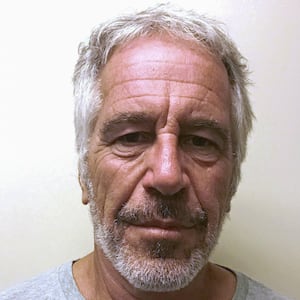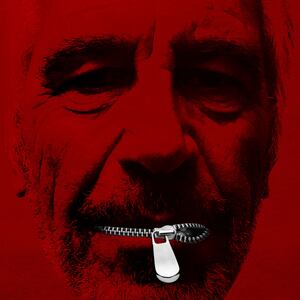Had Jeffrey Epstein, inmate #76318-054, still been on suicide watch at the Metropolitan Correctional Center, regulations would have required him to remain under constant observation by trained “companion” inmates.
“They must be mature, reliable individuals who have credibility with both staff and inmates,” the regulations say of the companions, who are paid prison wages and rotate around the clock in shifts of no more than five hours so as to stay alert.
Regulations also would have required Epstein to be housed in a “suicide prevention room,” which “may not have fixtures or architectural features that would easily allow self-injury.”
ADVERTISEMENT
He would have continued to be interviewed daily by the Program Coordinator, the psychologist in charge of the MCC’s suicide prevention program. The Program Coordinator is required to “record clinical notes following each visit.”
And the Program Coordinator would have had to continue consulting with the Regional Psychology Administrator, as was required when Epstein first went on suicide watch and again when it extended beyond 72 hours.
Meanwhile, the inmate companions would have maintained their 24-hour watch. A companion would have only needed to sound an alert for the prison staff to spring into action.
“In all cases, when an inmate observer alerts staff to an emergency situation, staff must immediately respond to the suicide watch room and take necessary action to prevent the inmate on watch from incurring debilitating injury or death,” the regulations state. “In no case will an inmate observer be assigned to a watch without adequate provisions for staff supervision or without the ability to obtain immediate staff assistance.”
The regulations add in bold, “THE DECISION TO USE INMATE OBSERVERS MUST BE PREDICATED ON THE FACT THAT IT TAKES ONLY THREE TO FOUR MINUTES FOR MANY SUICIDE DEATHS TO OCCUR.”
But on July 29—six days after the incident that led to his placement on suicide watch and seems in hindsight to have more likely been an actual attempt to take his own life rather than a stunt resulting only in minor bruises around the neck—Epstein was deemed to be “no longer at imminent risk for suicide.” Regulations mandated a final evaluation by the Program Coordinator.
“Once an inmate has been placed on watch, the watch may not be terminated, under any circumstances, without the Program Coordinator or designee performing a face-to-face evaluation,” the regulations state. “Only the Program Coordinator will have the authority to remove an inmate from suicide watch.”
The regulations recommend that the Program Coordinator complete a report “prior to terminating the watch, or as soon as possible following watch termination, to ensure appropriate continuity of care. Copies of the report will be forwarded to the central file, medical record, psychology file, and the Warden. There should be a clear description of the resolution of the crisis and guidelines for follow-up care.”
The report should, “at a minimum,” detail “risk factors assessed, changes in risk factors since the onset of watch, reasons for removal from watch, and follow-up recommendations.”
Epstein was returned from the suicide prevention room to the Special Housing Unit, where he had been found lying prone on the floor of his cell last month. The SHU doubles as a discipline unit and as a refuge for inmates who fear for their safety in the general population, as Epstein reportedly did.
One difference for Epstein upon his return was the absence of a cellmate such as Nicholas Tartaglione, a ex-cop turned accused quadruple murderer. Tartaglione claims to have saved Epstein during the earlier possible attempt.
And there were no more inmate companions keeping watch.
Epstein was with just Epstein in a cell whose architectural priority was more security than suicide prevention.
A man who had acted in the outside world as if the rules did not apply to him was now left without the protection of prison rules that had been promulgated over the years to prevent incidents such as the suicide of mobster Louis Turra in 1980. Turra embarrassed everybody by hanging himself at lunchtime in the MCC’s psychiatric unit.
"I think Turra realized that the evidence against him was insurmountable,” Assistant U.S. Attorney Robert Gordon, was quoted saying. “I guess he was unable to face the prospect of spending the rest of his life in jail."
The same may well have been true of Jeffrey Epstein. He likely felt that all the more keenly after thousands of pages of damning court documents were unsealed on Friday.
Since Turra’s days, the regulations have come to require the facility to perform suicide emergency drills three times a year. One of these drills is conducted in the SHU.
“Inmates in [SHU] often may be at higher risk for suicidal behavior,” the regulations note.
The SHU is required to keep on hand a “suicide rescue tool,” a sharpened hook that can he slipped between an inmate's neck and a noose without injuring him, but is capable of cutting right through bedsheet or blanket.
“Every SHU will be equipped with a suicide rescue tool(s) that is sharp, stored in a secure location, and readily available,” the regulations state. “All SHU staff will be trained to use the tool and in the procedures for responding to a suicide emergency.”
The SHU officers had occasion to put their training to use at around 6:30 a.m. Saturday, when Epstein was found unresponsive in his cell. A Bureau of Prisons document headed RESPONDING TO A SUICIDE EMERGENCY spells out in detail how SHU officers should respond to a suicide attempt:
“A Segregation Officer observing an inmate in the act of committing suicide, causing other self-injurious behavior, or who appears to have committed suicide will call for back-up before entering the cell. The officer will notify the Control Center and the Lieutenant’s Office by radio of the situation and request immediate back-up. BACK-UP MUST BE PRESENT IN ORDER TO ENTER A CELL.”
The page goes on, “The ‘cut-down’ tool is located in the storage closet on a shadow board. It is the #1 officer’s responsibility to locate this item at the start of the shift. This tool is only authorized to be used in emergency situations. Miscellaneous use of this tool is not permitted and will result in dulling the blade of the tool.”
The page continues, “In the event an inmate commits suicide, the scene of the suicide will be treated in a manner consistent with the investigation of an inmate death. All measures necessary to preserve and document the evidence needed to support subsequent investigations will be maintained or otherwise adequately recorded.”
The MCC contacted the FDNY Emergency Medical Service at 6:38 a.m. An ambulance responded and took Epstein to a nearby hospital. Epstein’s orange prison jumpsuit had been pulled open to bare his chest. One paramedic was administering compressions while another was squeezing an Ambu bag to force air into his lungs as they rolled him in.
Epstein already had a death pallor, so it was no surprise when it was announced that he had been beyond saving. He was carried out in a body bag for transport to the Office of the Chief Medical Examiner for autopsy.
Back at the MCC, officials had a form headed GUIDE FOR THE PSYCHOLOGICAL RECONSTRUCTION OF AN INMATE SUICIDE. They would be filling in such things as Epstein’s marital status and social status and offense and “personality description” and “antecedent circumstances” and “identifiable stressors” and whether there was a suicide note. They also would be expected to provide a “Full Description of Suicide Act and Scene (to include diagrams where appropriate).”
Meanwhile, everybody from Attorney General William Barr to Rep. Alexandria Ocasio-Cortez was calling on the BOP to explain how this could have possibly happened.
If you or a loved one are struggling with suicidal thoughts, please reach out to the National Suicide Prevention Lifeline at 1-800-273-TALK (8255), or contact the Crisis Text Line by texting TALK to 741741








